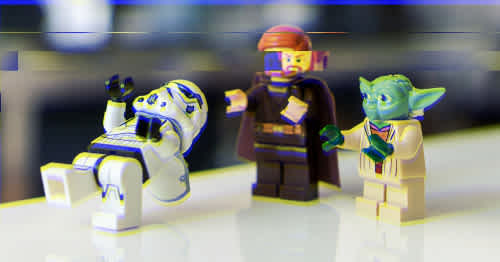Have you ever heard of the following proverb?
“To a (wo)man with a hammer, every problem looks like a nail”
It shows that people who have minimal tools for solving problems will use the tools they have, even if it’s the wrong one to solve it.
A basic example: imagine you only have a hammer and screws (no nails) while putting together a new piece of furniture. The option to hammer the screws is there, but it won’t get you very far in accomplishing your goal. https://giphy.com/gifs/xUNd9AYEql4m1Jj1mg/html5
This proverb, also known as the Man with the Hammer Syndrome is one of many mental models. Wait what is a mental model?
Defining Mental Models
A mental model is an idea that represents how something works in the real world; it can refer to frameworks, ideas, or worldviews that explain how the world works from your unique perspective. The complexity of our world makes it difficult for us to understand and remember how everything works together, so our brain uses models to comprehend it. It creates mental models and relates them to each other, which makes sense because our world is so intertwined (similar to a huge micro-service architecture across an enterprise).
Another simplified way of thinking about these ideas and how they relate can be discipline areas like Science, Engineering, or Psychology.
The big ideas from these disciplines are mental models, and learning mental models from the large disciplines gives you a position of strength when solving challenges because you can relate them to various models, across these various disciplines, solving problems in ways those who specialize may not.
Here’s an example of Elon Musk using the First Principles (Physics) to make batteries more cheaply: https://www.youtube.com/watch?v=NV3sBlRgzTI
Creating a Latticework of Models is Key
Charlie Munger, Vice-Chairman of Berkshire Hathaway and Warren Buffet’s right-hand man, noted the importance of mental models in his own life’s successes in a 1990’s speech. It was during this speech he said the following:
“Well, the first rule is that you can’t really know anything if you just remember isolated facts and try and bang ’em back. If the facts don’t hang together on a latticework of theory, you don’t have them in a usable form.
You’ve got to have models in your head. And you’ve got to array your experience both vicarious and direct on this latticework of models. You may have noticed students who just try to remember and pound back what is remembered. Well, they fail in school and life. You’ve got to hang experience on a latticework of models in your head.”
The latticework of mental models can be compared to the specialization versus generalization debate in the tech world. It’s not that specialization isn’t good in many cases, but it does leave you open to blind spots in areas outside your expertise.
For example, frontend versus backend development. It’s possible to become specialized in either discipline.
Depending on your project and team, you need both to create a strong product. The full-stack engineers that sit between those two anchors, the specialists, are the glue that understands the way the different services disciplines work together - creating solutions that bring forth answers that make both systems better. That cross-discipline knowledge prevents falling victim to the (wo)man with the hammer syndrome.
Additionally, one can use mental models from disciplines outside the tech industry to be a better engineer and decision-maker on a team.
Margin of Safety from Engineering
When architects build bridges, they will be given the number of kilograms the bridge must support. Let’s say based on the length of the bridge, with the average and weight of an automobile, a specific bridge must support 20,000 KG. Architects will add a margin of safety to the weight that the bridge can handle, maybe 30%, so it can actually hold 26,000 KG.
The reason for this is similar to why there is always an extra cushion in monthly budgets because things can go amiss. The estimates of the number of cars at a given time might be off in a rare circumstance, and it’s much better to add in that margin of safety than hope it never happens - saving lives in the process!
Now imagine you’re Netflix and know at peak hours you need X amount of data to be streamed per minute, which requires Y number of clusters spun up. Can you imagine how a margin of safety can be applied here too?
Inversion from Mathematics
When engineers are working towards their next promotion, they typically use forward thinking to determine how they can best accomplish their goal: “What are the top things I can do to get promoted this year?”
There’s nothing wrong with the question and it can generate great ideas. But I doubt many people also ask themselves the following:
“What are the top things that could ruin my chances to get a promotion?”
In most cases, avoiding the big mistakes that hamper your promotion will be more helpful to you. The best part is this: it’s easier to avoid a few big mistakes than achieving all forward-thinking ideas. It reminds me of Warren Buffet’s reputation quote: “It takes 20 years to build a reputation and five minutes to ruin it. If you think about that, you'll do things differently.”
You can quickly see that avoiding some big mistakes prevents that from happening!
My Side Project: The Mental Model Dictionary
If you’ve made it this far, then you can understand just how intrigued I became in the world of mental models. They are an amazing way to make better decisions, avoid big mistakes, and continuously learn throughout your life. All good things!
As I started researching and learning the big ideas, I noticed that yes, there were many lists with summaries of the mental models or long blog posts about individual ones, these were helpful of course, but not accessible enough to me daily.
I wanted quick access to specific mental models with summaries, examples, and more resources on each. Thus, The Mental Model Dictionary was born!
The idea was to create a “dictionary” with “entries” of mental models in one place and grant users the ability to author their own mental models.
I ended up being the only crowd-sourcing author; overall though, I truly enjoy looking at the entries and hope to contribute more towards the project development in the future. More entries need to be added, but that too will come!
By combining the ability to document mental models, easily search for them, I hope to make them more accessible to everyone - inspiring them towards continuously learning in their life!


